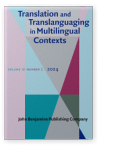Vol. 10:2 (2024) ► pp.188–205
Vol. 10:2 (2024) ► pp.188–205
Translanguaging in a beauty salon
Functions of pidgin Arabic in ELF conversations
This is an explanatory case study of how translanguaging offers space for practicing two shared languages: Saudi Pidgin Arabic and English as a lingua franca (ELF). It attends closely to overt types of translanguaging resources practiced by interlocutors. The study utilizes the conversation analysis (CA) approach to analyze conversations totaling 240 minutes, held in a beauty salon, between a Saudi female client and a Filipino beautician who communicated with each other using English and Saudi pidgin. The results show that the speakers’ interaction is mainly in English, but they switch to pidgin Arabic to fix misunderstandings, create humor, and engage in cooperative interaction. The study demonstrates that overt translanguaging resources employed by participants strengthen the multilingual nature of their ELF interactions, during which another contact language–Saudi pidgin in this case–can be practiced as another lingua franca. The study extends the limited literature on the nature of translanguaging in lingua franca social contexts and demonstrates the uniqueness of the translanguaging resources employed by ELF users.
Article outline
- 1.Introduction
- 1.1What is ELF communication?
- 1.2Translanguaging theory and ELF social interactions
- 1.3Translanguaging in Saudi Arabia
- 2.Method
- 3.Results
- 4.Discussion
- 5.Conclusion
- Acknowledgements
-
References
